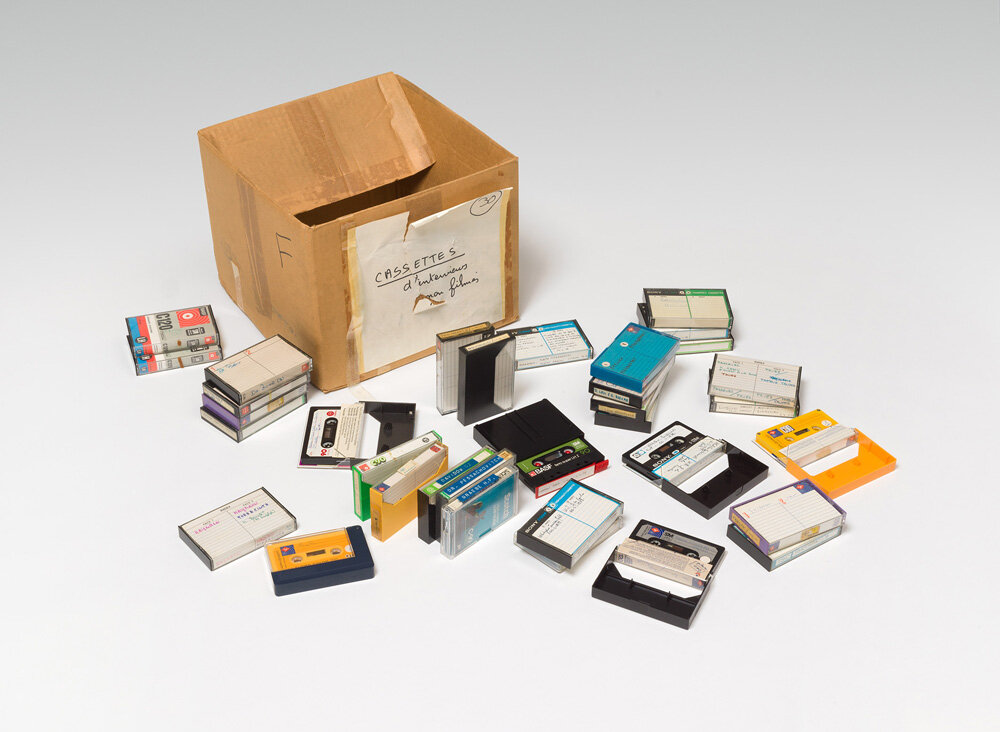A Peach of a Synagogue

Image by Kurt Hoffman
If you were asked to guess the top tourist destination in each state, you might go with the Bellagio Fountains in Las Vegas, the “Bean” monument in Chicago, or Central Park in New York City. Your local synagogue might not immediately spring to mind.
Unless you live in Savannah, Georgia, that is. The reform congregation Mickve Israel has been named the most popular travel attraction in its state, up there with the world-famous attractions mentioned above, according to TripAdvisor’s popularity index.
“We find that very hard to believe — but we’ll take it!” said Phoebe Kerness, a longtime member of Mickve Israel and co-chair of its museum committee.
Savannah might be better known for the Georgia State Railroad, the U.S.’s oldest antebellum railroad facility still in existence; Chippewa Square, where Forrest Gump sat on a bus stop bench and shared his life story; or the Cathedral of St. John the Baptist, a striking piece of architecture built in the 1870s. But the Jewish community in Savannah has 150 years even on that.
“We’re probably one of the most surprising locations in the state of Georgia,” Herbert Victor, co-chair of Mickve Israel’s museum committee, told the Forward. “People who are not from the South — from the north of the Mason-Dixon line — are shocked to hear that there are Jews in Georgia at all, other than maybe Atlanta.”
That discovery is one of the reasons that so many tourists are attracted to the Mickve Israel synagogue: Their interest is piqued by the novel idea of a community of Jews living in the Deep South. (Stumbling across a synagogue in New York’s Upper West Side might be less of a revelation.) There’s another reason Mickve Israel keeps bringing in visitors: It’s a well-oiled tourism machine, replete with guided tours, a museum and knowledgeable docents, whom reviewers on TripAdvisor shower with praise.
But the Mickve Israel synagogue is much more than a curious congregation or remarkable museum — it’s emblematic of the very story of American Jewry and a testament to almost three centuries of U.S. history.
“The story of the Jews and the part they played in the settling of the South and even Monticello is very interesting,” Robyn B, a TripAdvisor user from Denver, Colorado, wrote on the review site. “An unlikely story [is] brought to light here.”
The first Jews arrived in Savannah on July 11, 1733, five months after General James Oglethorpe, the British colonialist and social reformer, established the colony of Georgia. The second ship that arrived in Georgia from England, called the William and Sarah, carried 42 Jews — although one Jew did not survive the journey — including eight German Ashkenazim and 34 Spanish Portuguese Jews from London’s Bevis Marks Synagogue, the oldest synagogue in the U.K. This was the largest Jewish group to arrive in the colonies by that time and the first to land in the South.
After two years, during which they probably held private services in their homes, the Jews of Savannah agreed to open a synagogue called Kahal Kodesh Mickva Israel, or the Holy Congregation Hope of Israel. Dedicated in 1735, was the third congregation to be established in America, following New York City’s Shearith Israel in 1654 and Jeshuat Israel in Newport, Rhode Island, a few years later.
Jews in early Savannah had a unique experience. Some other colonies did not grant Jews equal rights; in Connecticut, for example, Jews were banned from public worship until 1843, and the last state to lift its ban on non-Protestant state officials (New Hampshire) did not do so until 1877. But “thanks to Oglethorpe,” Kerness said, “Savannah is one of the only Jewish settlements that received immediate equal rights, [such as] land grants and voting rights — and they had freedom of religion.”
“From the very beginning, we were part of the conversation,” Kerness said. “It’s not like we’re another community that has worked its way in — we continue to be part of the growth and development of the [city’s] economic, religious and political [landscape].”
Georgia’s Jews helped to found Solomon’s Lodge, the oldest operating Masonic lodge in the U.S. America’s oldest orphanage still in existence, Bethesda Home for Boys — now a residential education program called Bethesda Academy — is funded by the Union Society, which was co-founded by Benjamin Sheftall, an Ashkenazi Jew who arrived in Savannah on the William and Sarah and whose descendants still belong to the city’s Jewish congregation.
Mickve Israel also helped support the Girl Scouts, an organization that now boasts millions of members across the world, which was founded in Savannah in 1912. Three of the first Girl Scout leaders were from Savannah’s Jewish community, as were many of the girls who made up the early troops.
Mickve Israel also gave Savannah a mayor, Herman Myers, at the turn of the 19th century, and Mordecai Sheftall — son of the aforementioned Benjamin Sheftall — became the highest-ranking Jewish officer in the American Revolutionary forces during the Revolutionary War. Dr Samuel Nunez, who arrived on the William and Sarah in 1733, became Georgia’s first practicing physician.
“We were there at the ground floor,” Victor said. “We were involved in all the things that have happened in Savannah history: the Civil War, World War I, the Great Depression.” The synagogue continues to contribute to Savannah: every year, Mickve Israel hosts the Shalom Y’all Jewish Food Festival in Forsyth Park, which attracts some 15,000 hungry visitors.
Despite the community’s longevity, it hasn’t all been smooth sailing since that ship first docked in Savannah. Although most of the early Jews were Sephardic, many of those who joined later were Ashkenazi. Reverend John Martin Bolzius, a Lutheran pastor, detailed the differences between the two groups — from language spoken to dietary laws observed — in a letter to a friend in Germany.
Although the Jews “enjoy all privileges the same as other colonists,” Bolzius wrote in 1739, “they have no synagogue, which is their own fault; the one element hindering the other in this regard. The German Jews believe themselves entitled to build a synagogue and are willing to allow the Spanish Jews to use it with them in common, the latter, however, reject any such arrangement and demand the preference for themselves.”
It brings to mind the old Jewish joke about the man rescued from a desert island. While giving his saviors a tour of the land, he points out his home and his shul. When his rescuers ask what the third building is, he replies, “That’s the shul I don’t go to.”
Despite these disputes — and, no doubt, many others, if Jewish jokes are anything to go by — the Mickve Israel synagogue has stood in its current place since 1878, making it the third oldest synagogue building still standing in the U.S. Today, its tower rises regally over the flat, tree-lined streets of Savannah, presiding alongside the green spires of its fellow monarch, the Cathedral of St. John the Baptist.
Some 280 years after those few dozen Jews arrived in Savannah, the city boasts several synagogues and day schools that cater to all tastes among its population of 3,800 Jews — about 1% of the city’s total population. Some 350 households make up Mickve Israel’s membership. Kerness estimates that Mickve Israel attracts between 8,000 and 10,000 visitors each year, of whom slightly less than half are not Jewish.
“The Mickve Israel Temple tour was one of the highlights of our long weekend in Savannah!” QuincyKid, from Austin, Texas, wrote on TripAdvisor. “We are Christians and had never been in a Jewish house of worship for any appreciable time. Our outré guide was extraordinarily knowledgeable and patient with our many questions.”
Mickve Israel offers guided tours of its sanctuary, an ornate cream-colored chapel with an organ, majestic stained-glass windows almost a century old, and gothic revival cast iron pillars painted in café au lait marble. “Rumor has it that we bought the building from a bishop,” the tour guide explained, “but we did it all ourselves.” The giveaway is the ark, designed to look like the walls of the old city of Jerusalem.
The synagogue also houses a museum, which contains a 15th-century deerskin Torah scroll that is believed to be the oldest Torah scroll in the U.S. The congregation reads from this Torah each year on its anniversary, on July 11. As well as other historical Judaic artifacts, such as a haggadah dating to 1784 Amsterdam, the museum displays letters from about a dozen U.S. presidents. Upon his presidential appointment, George Washington addressed a letter “To the Hebrew Congregation of the City of Savannah, Georgia.”
“May the same wonder-working Deity, who long since delivered the Hebrews from their Egyptian oppressors, planted them in the promised land, whose providential agency has lately been conspicuous in establishing these United States as an independent nation, still continue to water them with the dews of Heaven, and make the inhabitants of every denomination partake in the temporal and spiritual blessings of that people, whose God is Jehova,” President Washington wrote.
For a suggested donation of $6, visitors can see these items on a guided tour, which runs twice daily from Monday to Friday. The synagogue is closed for business, as it were, on Shabbat and Jewish festivals, but as Kerness said, “That doesn’t mean tourists don’t try and sneak in.”
They might not get an official tour of the premises, but tourists who show up on Shabbat might at least get a good show. “Our rabbi is a riot,” synagogue member and docent Gail Kaplan said of Rabbi Robert Haas. And if that doesn’t do the trick, there’s the kiddush.
“If they come on a Saturday at 11, [the service] is always followed by a full lunch. We invite everybody who’s there,” said Kerness. “We’re a very hospitable, haimishe place — that’s our trademark.”
Lauren Davidson is a frequent contributor to the Forward.














